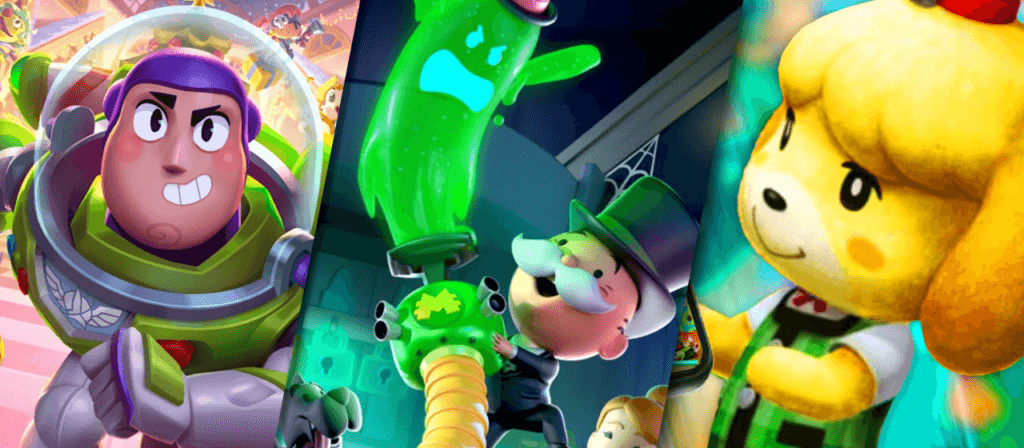This episode of the Mobile Games Playbook peers into the crystal ball to forecast the mobile gaming landscape of 2025 with GameRefinery’s experts, Kalle Heikkinen, Senior Chief Market Analyst, and Wilhelm Voutilainen, Chief Game Analyst.
![]()
![]() Spotify, BuzzSprout, TuneInRadio, iHeartRadio
Spotify, BuzzSprout, TuneInRadio, iHeartRadio
– If you enjoy the episode, remember to hit subscribe!
We’ll delve into how we expect monetization models such as DTC and subscriptions to evolve, the continued growth of LiveOps, and the upcoming genres/games we expect to be taking over the charts in 2025. Join us as we discuss the trends poised to shape the future of mobile gaming. This episode will provide valuable insights for developers and players alike, offering a glimpse into the year ahead.
You can also watch the episode on YouTube:
Topics we will cover in this episode:
- Introduction
- Key monetization trends
- LiveOps and the evolution of event frameworks
- The role of AI in LiveOps and game personalization
- Genre mashups and new titles for 2025
- Gamification beyond gaming
- The competitive landscape and closing thoughts
Read transcript
Introduction
Jon Jordan: Welcome to the Mobile Games Playbook, in association with Liftoff. Join us as we uncover the latest trends in user acquisition, monetization, and mobile game design. Hello, and welcome to the Mobile Games Playbook! Thanks for tuning in for another episode. In fact, thanks for tuning in for the first episode of 2025.
In this podcast, we are going to look into our crystal balls and make some predictions about what’s going to happen. Obviously, that means, to some degree, we’re looking at what happened in the trends of 2024 and how they move over, we think, to 2025, but also a few other things as well that we will be looking at. I’m your host, Jon Jordan, and I’m joined today by experts who are going to make their predictions.
So we have Kalle Heikkinen, Senior Chief Market Analyst, and Wilhelm Voutilainen, Chief Game Analyst, both from Liftoff. How’s it going, Wilhelm?
Wilhelm Voutilainen: I’m doing excellent. It’s really great to be here.
Jon Jordan: I always think the end of the year/the start of year podcast is the most fun ’cause there’s so much to say, and it’s a really open discussion. We can go where we’re gonna go, but we’re gonna start off with something I guess that we talk about all the time. ‘Cause it is the fundamental bit of the mobile games industry or any games industry, and that’s monetization.
Key monetization trends
Jon Jordan: Kalle, please kick us off by sharing what you think will happen regarding those monetization trends.
Kalle Heikkinen: Yes. So, just to set the scene, let’s discuss the big trends in monetization in 2024 and before that. Of course, the industry has been discussing direct-to-consumer approaches to web store subscription plans and how to monetize those; that has been a big topic, and then hybrid monetization.
And if we think about why these have been hot topics for some time already, game developers are always trying to find ways to diversify their revenue sources and, in particular, to find ways to monetize the non-paying users. Of course, we’re always trying to revise genre by genre, but to make a generalization, that’s the case.
That’s one reason so many new hybrid casual games are entering the market, especially in 2024. The other thing that I would like to highlight is the regulatory pressure on some of the existing monetization methods. I’m looking at gacha or Loot Box monetization in particular.
So I think it was two or three days ago or so that the BBC actually published this piece about developers not disclosing in their game ads that their games contain loot boxes, even though they should. So let’s see what the outcome will be. But this is just another example of some scrutiny when it comes to these specific monetization mechanics, and there might be some negative outcomes to developers if they’re not following the rules set in specific geographical regions.
And then the third thing I would say that technological advancements, so it’s nowadays just even more possible to have, for example, even more personalized, let’s say IAP offers, or if we think about the web stores, they can be, they’re evolving all the time. They’re becoming more integrated, and the user experience is also improving constantly.
Regarding direct-to-consumer, which is obviously a hot topic, we see developers adding different kinds of engagement mechanics to the web store. So we’re talking about, for example, VIP memberships. They might be targeted to only the most high-paying superfan users and other kinds of loyalty plans to provide more value to those players who engage with the web stores, but obviously, the challenge still remains that there’s quite a lot of friction to drive the first-time conversion to a web store.
Jon Jordan: Interesting. Wilhelm, I know that you have done some research on some specific monetization offer types, for example. Do you have some insights for us?
Wilhelm Voutilainen: Yeah. So we have been following, for example, on the casual side, these different, on the live ops in general, we have been following this super closely for the past like three years or so.
If we look at what the top casual games are doing in the standard offers, it’s basically this kind of chain and progressive offer. So, basically, the first offer you get is free, and then the next one requires a premium price. Then, you get the new one for free, and then you pay for the progression element there. That’s becoming the industry standard now.
But recently, we have seen even further innovation in those mechanics. For example, Coin Master has its progression offers, but on top of that, it has a bonus progression milestone track. So based on how many offers you have claimed, purchased or claimed for free, then you can even get a bonus reward.
One other type, actually super interesting, that has come more from this mid-core, but now appearing in casual as well, are these engagement offers, which basically fuse the gameplay with direct monetization together.
For example, Dice Dreams is one of the trending, absolutely super-performing casual casino games in 2024. They have been running this deep dive journey event, for example, where you collect these event currencies and then have this offer where you use the event currencies. But again, it has this progression element. You purely need to play the game, but to get the maximum rewards, you also need to pay directly.
So there are really unique types of offers there. Some other really trending ones have been, as Kalle mentioned, games coming up with different kinds of monetization methods.
We might see some gacha regulation, so games have been bringing, like not just having those gachas in the mid core, let’s say, but also, on top of that, you have multiple different kinds of subscription plans.
Another really trending one has been mini-battle passes; of course, battle passes are one of the core mechanics in most mobile games nowadays. But on top of that, the games that run these battle pass seasons.
LiveOps and the evolution of event frameworks
Jon Jordan: So monetization, good. And you mentioned it a little bit, Wilhelm already, that plays into LiveOps, but, in terms of LiveOps as its own sort of subject, what do you think is going to be happening there?
Wilhelm Voutilainen: Yeah, so of course, LiveOps has been, and still is, I would say, one of the key aspects of having a successful free-to-play title. But now, I would say the trend, especially in 2025, will be as now, especially in these top games, the LiveOps frameworks and cadences are more established.
You really have this fluid event calendar with lots of different events running simultaneously. Something we’ve seen lately, especially, is these kinds of overarching and interconnecting events, and this has been happening both in the mid-core and casual sectors.
For example, on the mid-core side, we’ve been seeing overarching seasonal events. These are large-scale, multi-month events that tie together different gameplay modes. A great example is EA FC and Wild Rift. Wild Rift’s “Rift Adventures” event connected all events into one system, giving players a unified progression.
On the casual side, games like Lily’s Garden have been pushing interconnecting event systems even further. They now run multiple simultaneous events that require participation in all parts of the game. These trends are going to define LiveOps in 2025.
Kalle Heikkinen: To add to what Wilhelm said, one trend that continues is IP collaboration events. We saw some major revenue spikes in 2024 tied to big IP events. For example, Brawl Stars’ SpongeBob event correlated with one of its largest revenue surges. We expect to see even more games leaning on recognizable IPs in 2025.
The role of AI in LiveOps and game personalization
Jon Jordan: And of course, we can’t talk about 2025 without mentioning AI. How do you see AI shaping LiveOps next year?
Kalle Heikkinen: AI could enable highly personalized live events. For example, a game could launch specific events or rewards aimed at re-engaging a player who is about to churn. It’s already happening to some extent, but we’ll likely see broader adoption as AI tools improve.
Wilhelm Voutilainen: AI is also being used to accelerate content creation for LiveOps. From cosmetic items to event UIs, AI tools are speeding up the production process. However, there’s still a lot of secrecy around how developers are using AI, possibly to avoid community backlash or to keep competitive strategies under wraps.
Jon Jordan: It’s fascinating how the industry is cautious about disclosing AI use. Perhaps we’ll see platforms requiring games to tag themselves as AI-enhanced, similar to what’s happening with crypto or blockchain.
Genre mashups and new titles for 2025
Jon Jordan: What about new game trends for 2025? Are there any standout predictions?
Wilhelm Voutilainen: We’re going to see more genre mashups, especially combined with IPs. Recent examples like Pokémon TCG and Capybara Go highlight the success of blending genres in creative ways. In addition, titles like Destiny Rising and Rainbow Six Mobile are set to bring innovation to the shooter genre.
Kalle Heikkinen: The influence of Chinese developers is also growing. Many of the most anticipated titles, like Delta Force and Project Mugen, are either developed or co-developed by Chinese studios. They’re setting a new bar for production quality and innovation.
Gamification beyond gaming
Jon Jordan: Let’s shift gears to non-gaming apps. Are there any trends there we should look out for?
Kalle Heikkinen: Gamification is a major trend across app categories. Apps like Strava use leaderboards to drive engagement, while platforms like LinkedIn are experimenting with gamified features. Even productivity tools and search engines like Bing are adding gamification elements like streak systems and reward-based tasks.
This is all about retaining users. Just as in gaming, it’s cheaper to keep an existing user than acquire a new one, so we’ll see more apps embracing these features in 2025.
The competitive landscape and closing thoughts
Jon Jordan: It’s clear that 2025 will be a year of evolution, from LiveOps frameworks to AI-enhanced personalization and gamification across industries. What’s your takeaway for the year ahead?
Wilhelm Voutilainen: I think we covered the main trends well. It’s going to be an exciting year, with innovation in monetization, game design, and player engagement.
Jon Jordan: Thank you, Wilhelm and Kalle, for your insights. And thanks to our listeners for joining us. Don’t forget to subscribe so you don’t miss any episodes. See you next time!




















